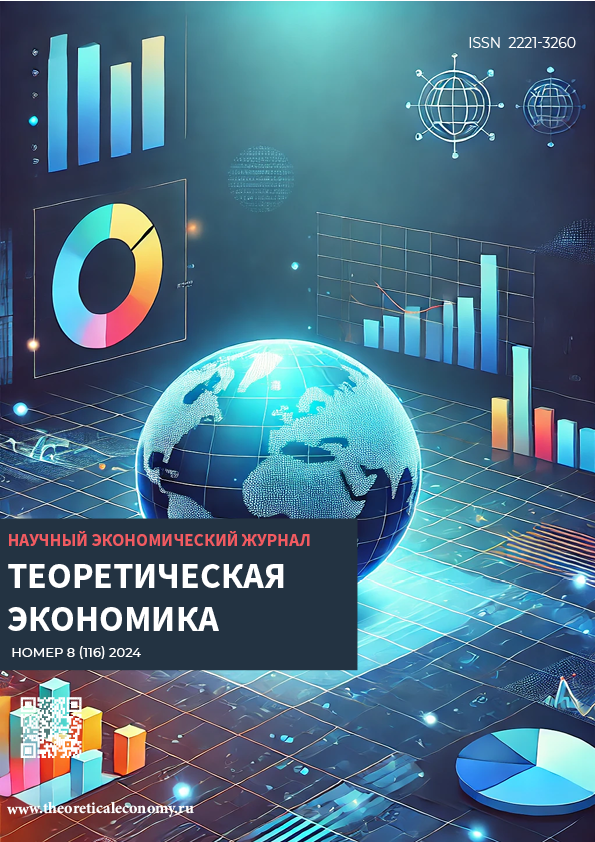Yaroslavl, Russian Federation
Yaroslavl, Yaroslavl, Russian Federation
The formation of a single labor market in the EAEU creates new opportunities and risks for national economies: the free movement of labor resources within the integration association affects not only the level of wages or employment, but also leads to more complex, complex consequences for donor and recipient countries. Using correlation analysis, the paper verifies the hypothesis that the reverse spillover effect associated with the return of migrant workers to their home countries contributes not only to the growth of value added in labor donor countries, but also stimulates demand for new technologies and services, which ultimately leads to an increase in the level of technological development of EAEU countries. As a result of the analysis, it was found that there is no statistically significant relationship between the variables under study – labor migration does not have a significant impact on the level of technological development of the EAEU countries. The results of the study can be used to develop a strategy of technological development of the EAEU countries, taking into account the parameters of external labor migration.
labor migration, EAEU, spillover effects, technological development, correlation analysis
1. Shkiotov S.V., Mayorova M.A. Vliyanie peretoka trudovyh resursov iz stran EAES na tehnologicheskoe razvitie Rossii // Ekonomicheskoe razvitie Rossii. №6 (31). 2024. S.17-22.
2. Capoani, Chabert, & Izzo. (2024). Understanding the Relationship Between Immigration and Innovation: A Systematic Review and Meta-Analysis. Journal of Economics, Race, and Policy, 7(2), 122–136. https://doi.org/10.1007/s41996-023-00135-x
3. Fackler, T. A., Giesing, Y., & Laurentsyeva, N. (2020). Knowledge remittances: Does emigration foster innovation? Research Policy, 49(9). https://doi.org/10.1016/j.respol.2019.103863
4. Zhang, G., & Zhang, H. (2023). Human mobility restrictions and innovation: evidence from China. Asian Journal of Technology Innovation, 31(1), 1–26. https://doi.org/10.1080/19761597.2021.1986411
5. Mercan, B., & Göktaş, D. (2011). Components of innovation ecosystems: A cross-country study. International Research Journal of Finance and Economics, 76, 102–112.
6. Laut, L. T., Pranizty, T. P. I., & Sugiharti, R. R. (2023). Does human capital spillover affect labor productivity? Journal of Socioeconomics and Development, 6(1), 36. https://doi.org/10.31328/jsed.v6i1.3759
7. Andersson, D., Karadja, M., & Prawitz, E. (2022). Mass Migration and Technological Change. Journal of the European Economic Association, 20(5), 1859–1896. https://doi.org/10.1093/jeea/jvac017
8. Statisticheskiy ezhegodnik Evraziyskogo ekonomicheskogo soyuza; Evraziyskaya ekonomicheskaya komissiya. – Moskva: 2023. – 498 s. URL: https://eec.eaeunion.org/upload/files/dep_stat/econstat/statpub/Stat_Yearbook_2023.pdf (data obrascheniya: 01.06.2024)
9. Global Innovation Index 2022. What is the future of innovation-driven growth? URL: https://www.globalinnovationindex.org/Home (data obrascheniya: 01.06.2024)
 This work is licensed under Creative Commons Attribution-NonCommercial-NoDerivatives 4.0 International
This work is licensed under Creative Commons Attribution-NonCommercial-NoDerivatives 4.0 International
















